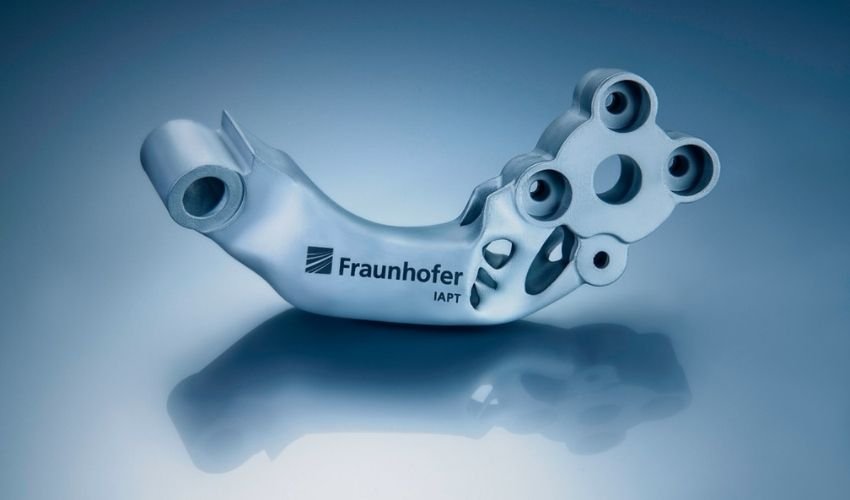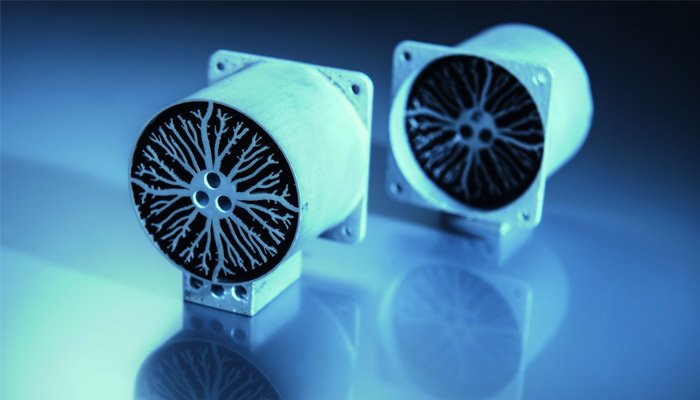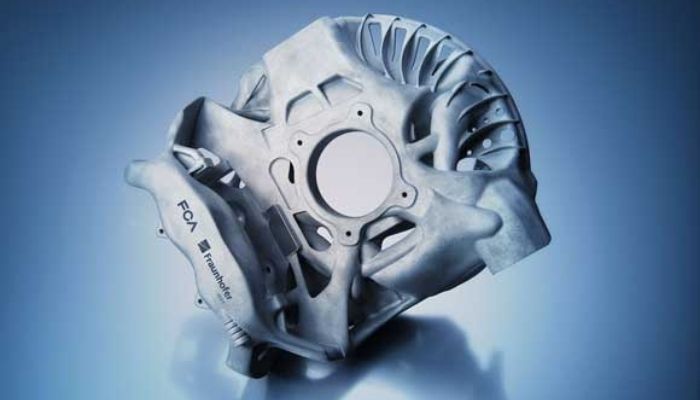Fraunhofer IAPT Optimizes 3D Printing for Car Door Hinges

Additive manufacturing is now an integral part of the production process in many industries. From fast and cost-effective prototyping to the production of final components, 3D printing offers companies a flexible manufacturing process with numerous advantages. These include, for example, the great geometric freedom of shape and the elimination of long transportation routes. However, in order for manufacturers to exploit the full potential of the technology, it is necessary to identify ideal process parameters. Fraunhofer IAPT claims to have found a way to reduce the cost and weight of making a car door hinge using additive manufacturing, thus opening the door to series production.
The Fraunhofer Research Institution for Additive Manufacturing Technologies (Fraunhofer IAPT) recently clarified the importance of optimization measures. Thanks to end-to-end optimization of the additive value chain, it could be possible to influence both the technical properties and the costs of the finished component. Using a case study, the institute determined the influencing variables for the component costs of a door suspension for a sports car step by step.

The Fraunhofer IAPT has been mastering various 3D printing processes for several years now, especially those based on metal (photo credits: Fraunhofer IAPT)
Optimized process opens the door for series production
In a first step, the experts analyzed the component using the software tool from 3D Spark, a Fraunhofer spin-off, and determined the cost-optimal component orientation for 3D printing when defining the design. The result was compared with the additively manufactured component without optimization. The result: a cost saving of 15 percent, which resulted from the optimal use of the installation space and a reduction in post-processing. However, the research team was not satisfied with this result. So the door hinge’s component geometry was optimized with the help of force flow simulation, and a basic shape was selected that reduced weight by 35 percent, which cut material requirements and printing time by another 20 percent. Together with the identification of the suitable material and the support structure-optimized design, a further 20 percent was achieved in comparison to 3D-printed door hinges without optimization.

Fraunhofer IAPT also used the approach to produce a part for a Fiat Chrysler (photo credits: Fraunhofer IAPT / Fiat Chrysler)
Fraunhofer IAPT states that further costs have been achieved in the adjustment of the AF process parameters. Thus, the optimized hinge is said to be 80 percent less expensive to manufacture overall. The value is said to break down as follows: Orientation and structural optimization and support reduction could reduce costs by 45 percent, while optimized material selection, speed parameters and utilization maximization in the AF process could reduce costs by another 35 percent. With the case study, the facility aims to demonstrate that the use of additive manufacturing can already be used profitably in large series of up to 5,000 pieces. The results of the systematic cost reduction for the articulated arm should be transferable to a wide range of automotive components.
Do you see further potential for the Fraunhofer IAPT approach? Let us know in a comment below or on our Linkedin, Facebook, and Twitter pages! Don’t forget to sign up for our free weekly Newsletter here, the latest 3D printing news straight to your inbox! You can also find all our videos on our YouTube channel.
*Cover Photo Credits: Fraunhofer IAPT







